Death Valley National Park is not your usual tourist spot. Far from the hustle of city life, this place brings you face-to-face with some of nature's most intriguing puzzles.
This park is a vast expanse of extreme conditions – scorching heat by day, chilly winds by night, and landscapes that shift from sand dunes to salt flats.
As you venture through this land of extremes, you'll encounter amazing spots that defy expectations, offering stark beauty and captivating landscapes in what seems like the harshest of environments.
In this guide, we'll also share the top 11 hidden gems of one of the most unique places in the United States and the entire planet.
1. The Enigmatic Sailing Stones
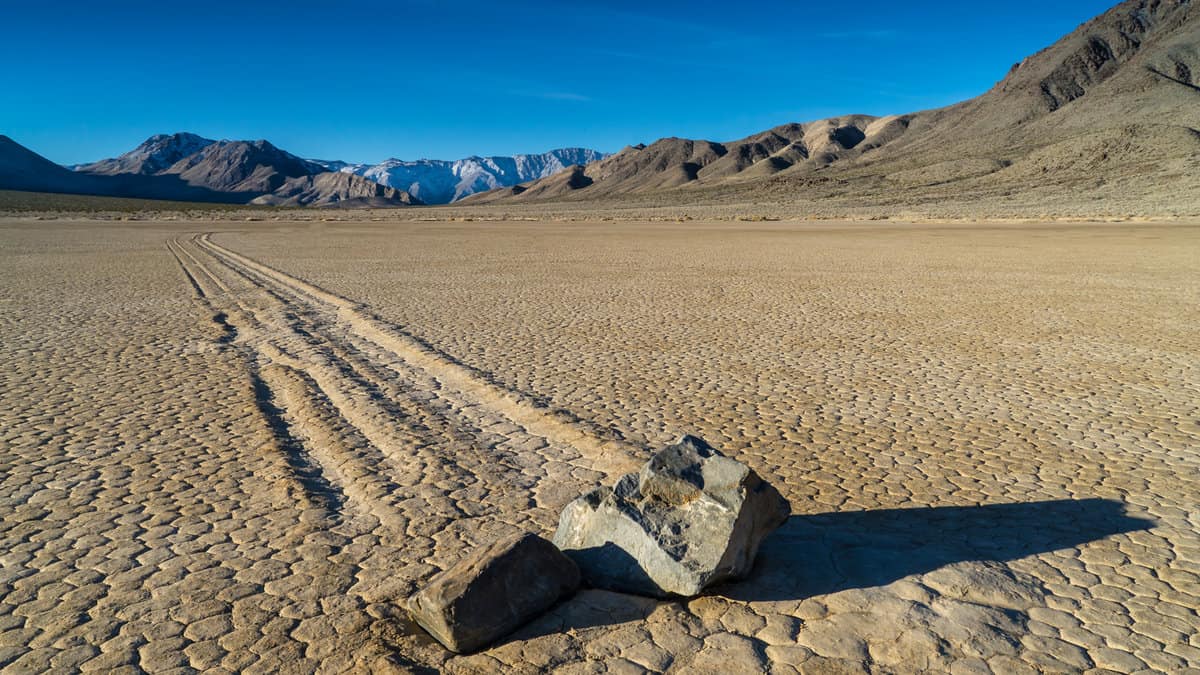
You're looking at the flat stretch of the Racetrack Playa, renowned for its 'sailing stones.'
Though these stones' movement has never been observed in real-time, the long trails etched into the ground attest to their silent, mysterious treks. The cause is a perfect alignment of ice, water, and wind, which propels these rocks across the playa's surface.
Beyond the silent enigma of the Racetrack Playa and its sailing stones, Death Valley National Park unfolds into an array of natural wonders, each with its own story.
As you journey through this land of extremes, you'll find more than just desert plains—a wealth of diverse landscapes is waiting to be explored.
From the lowest point in North America to towering dunes and colorful badlands, here are ten more must-see spots that showcase why this national park is like no other.
2. Mesquite Flat Sand Dunes
The Mesquite Flat Sand Dunes are among the most accessible dunes in Death Valley, allowing visitors to easily explore their beauty.
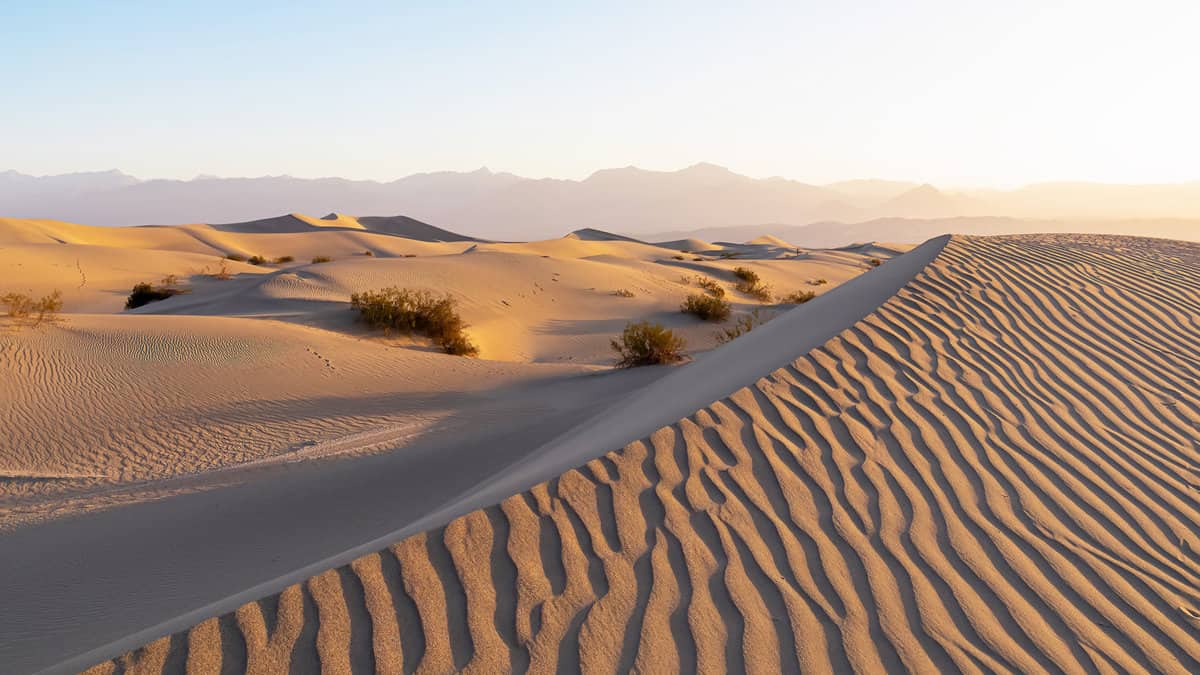
Some over 100 feet tall, these dunes are a focal point for visitors and a classic example of what wind patterns can sculpt from sand.
3. Zabriskie Point
You're at Zabriskie Point, viewing a landscape shaped from the sediment of an ancient lake that stood here millions of years ago.
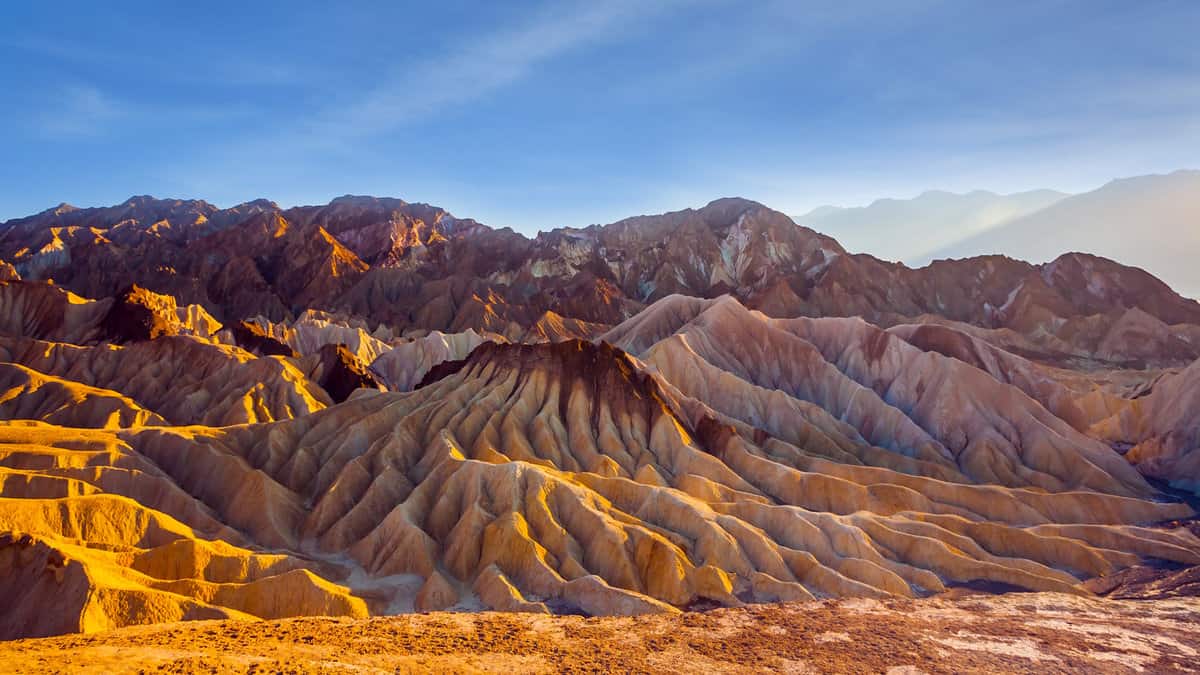
This point offers a unique perspective on the valley's geologic history.
4. Natural Bridge Trail
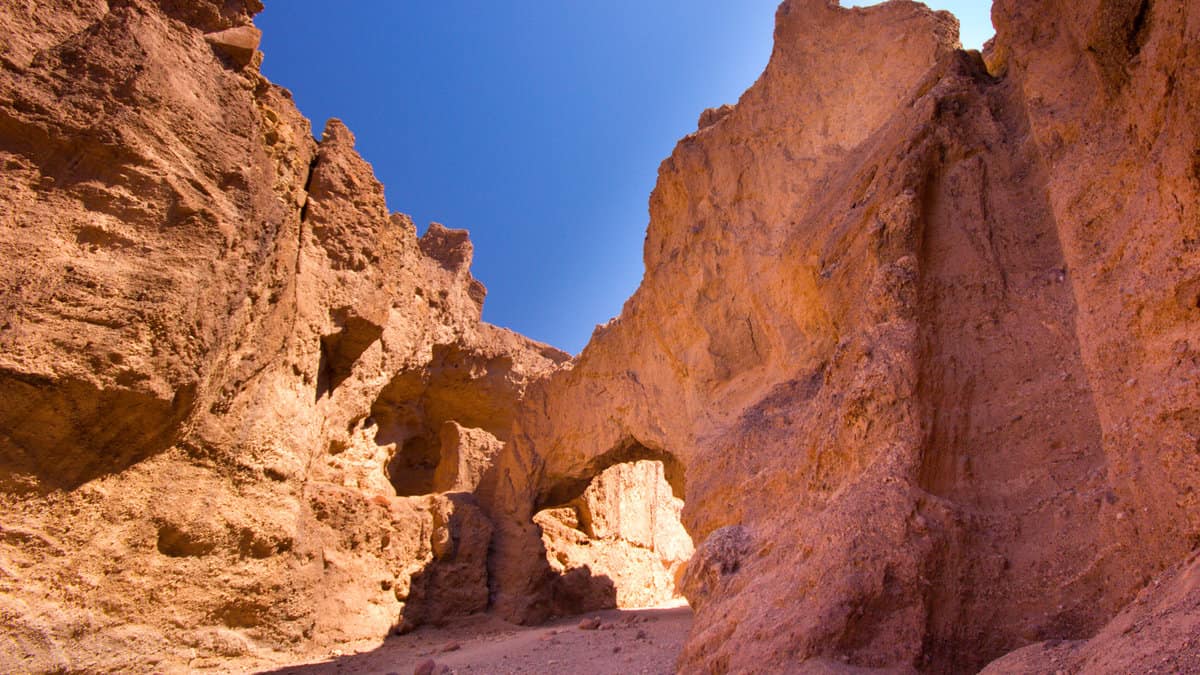
Hiking the Natural Bridge Trail, you come across a natural rock formation. This arch directly results from robust natural erosion processes at work in the park.
5. Badwater Basin
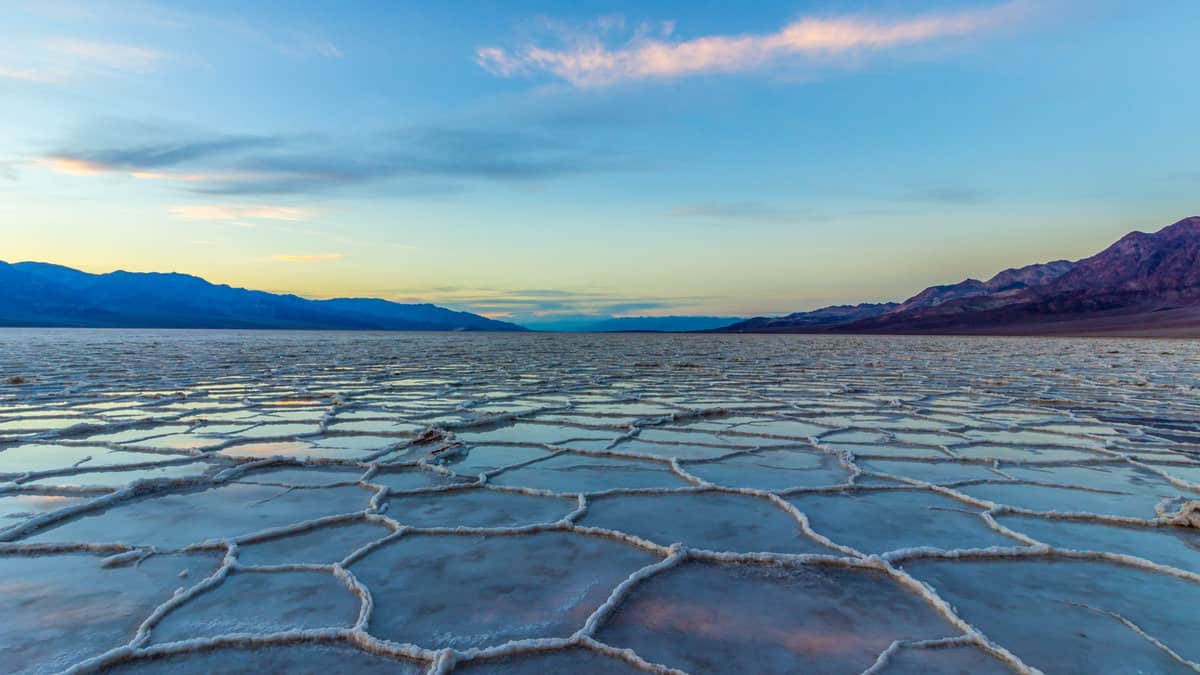
In Badwater Basin, you're experiencing the lowest point in North America. The salt flats here cover a large area, and the accumulated salts make for a unique geological feature you can walk on.
Badwater Basin, the lowest point in North America, lies 282 feet below sea level in the heart of Death Valley. Once covered by a lake, this vast salt flat has evolved over thousands of years, leaving behind a thick salt crust that dazzles under the sun.
Interestingly, the site gets its name from a tiny pool of water that, contrary to what its name suggests, is not harmful to drink. The name originated when a surveyor's mule reportedly refused to drink from it, likely deterred by the water's bitter taste due to its high salt content. This unique location draws curious visitors eager to witness its stark beauty and explore its extreme environment.
6. Artists Palette
Driving through the Artist's Palette, you see hills tinted with various colors.
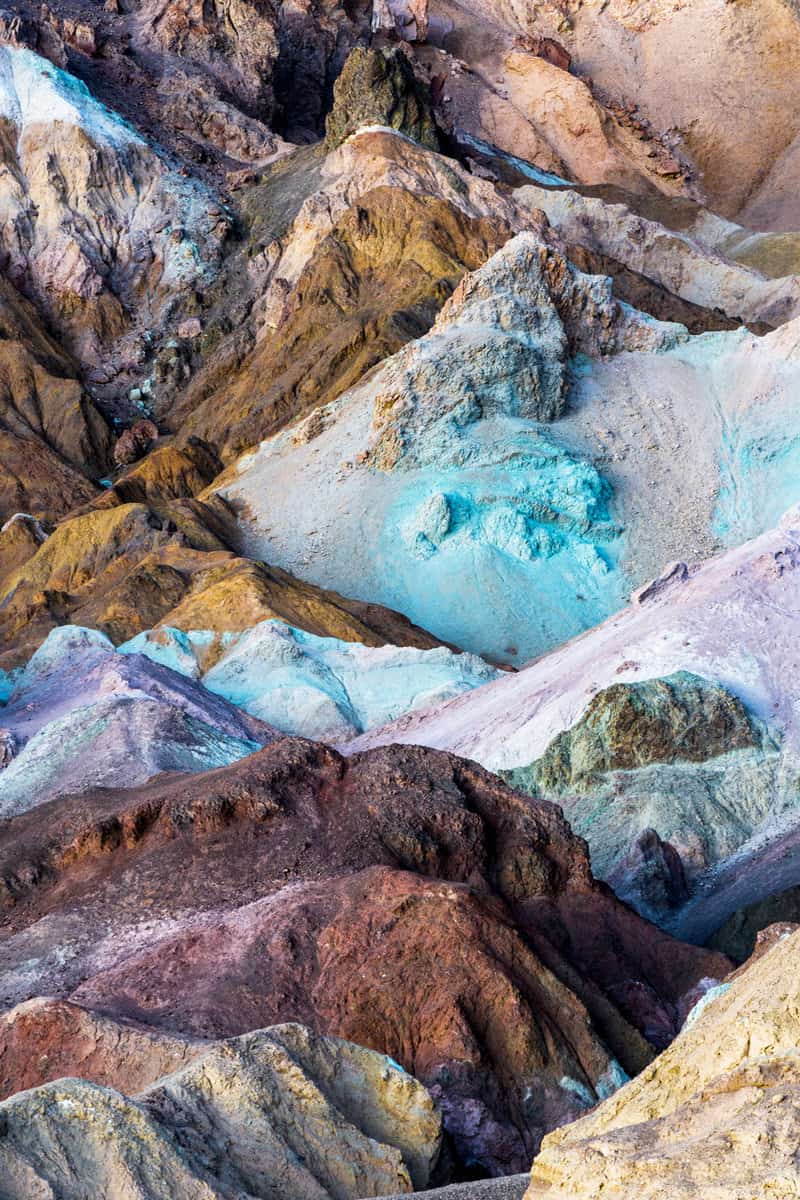
These colors are due to the oxidation of different metals in the rocks, an unusual and photogenic aspect of the park's geology.
7. Mosaic Canyon
Inside Mosaic Canyon, the walls show a natural 'mosaic' of rock fragments embedded in siltstone.
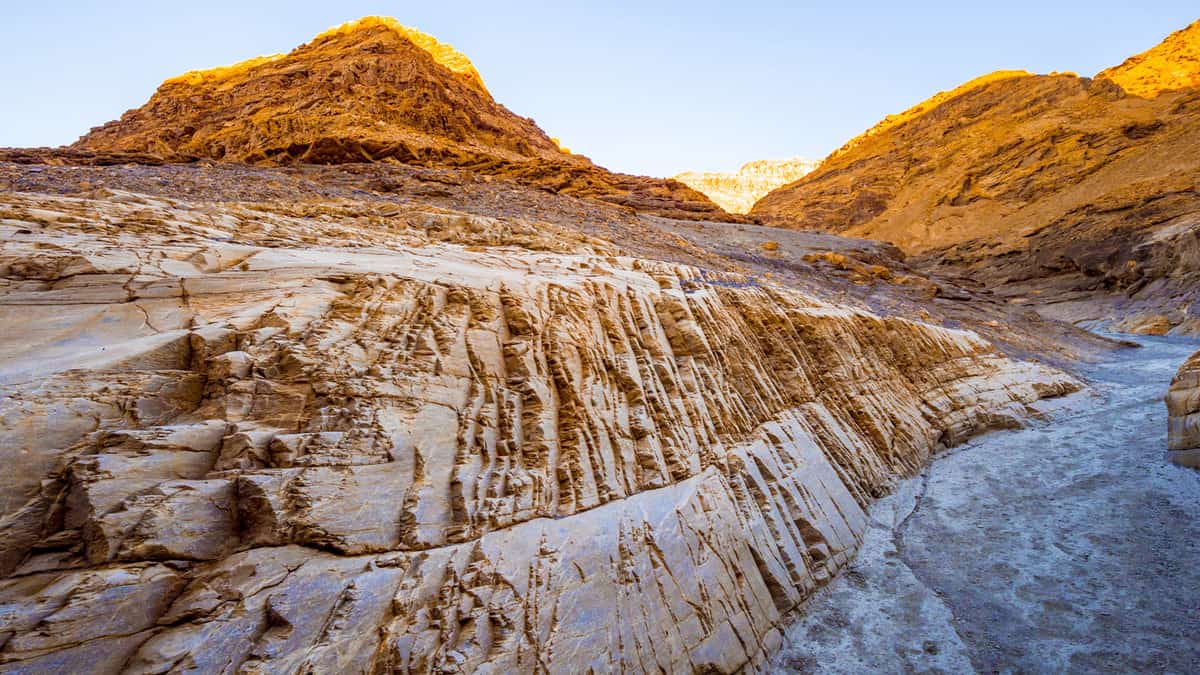
This canyon is a showcase of the park's varied rock formations.
8. Ubehebe Crater
Looking into Ubehebe Crater, you're viewing the result of volcanic activity that occurred relatively recently in geological terms.
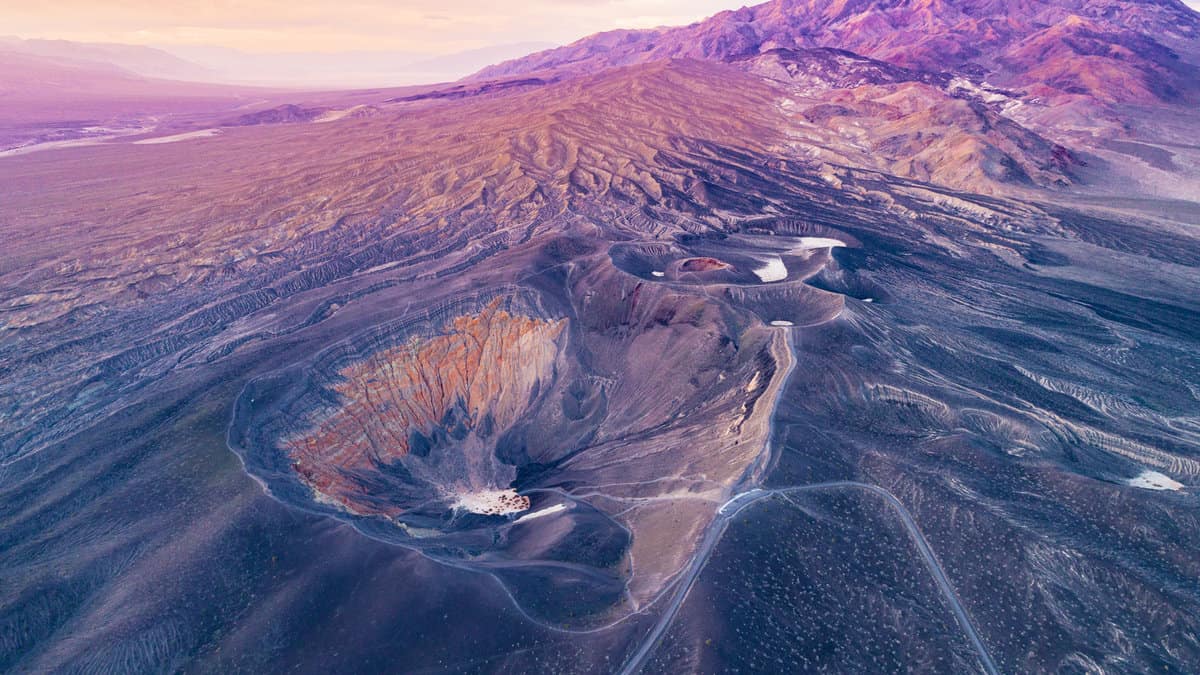
The crater is a significant feature resulting from steam and gas explosions.
Looking for a day trip from Vegas? This guide is for you: Death Valley From Las Vegas: Day Trip Itinerary.
9. Skidoo Mill
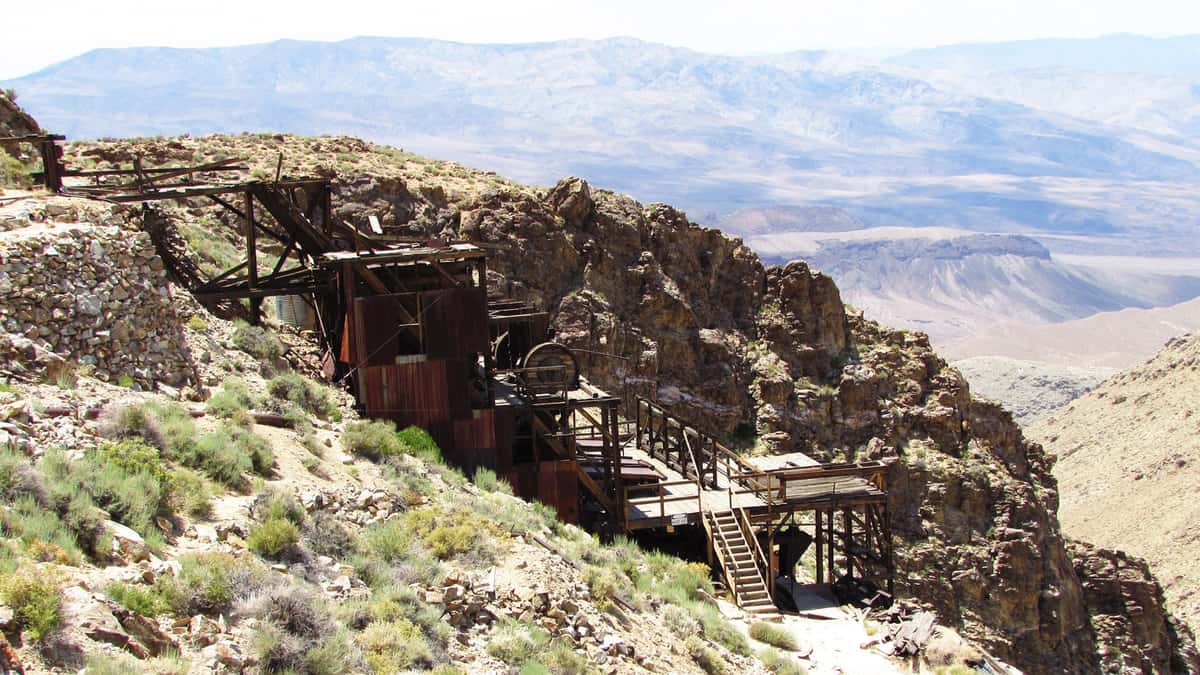
At Skidoo Mill, you're at a historical site where gold ore was processed in the early 1900s. The mill is an essential part of the park's mining history.
10. Keane Wonder Mine
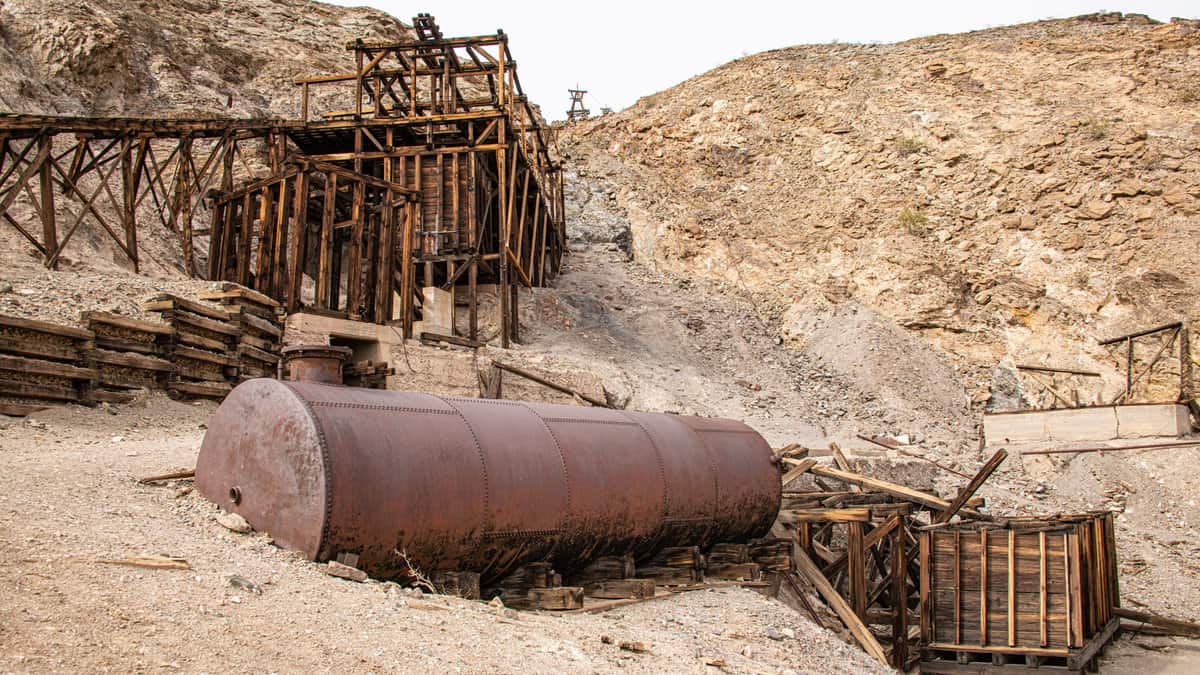
Visiting Keane Wonder Mine, you see the remnants of one of the most productive gold mines in the park. The tramway here is a piece of mining history that once transported ore from the mine to the valley below.
11. Dante’s View
Standing at Dante’s View, you're at one of the highest overlooks in Death Valley.
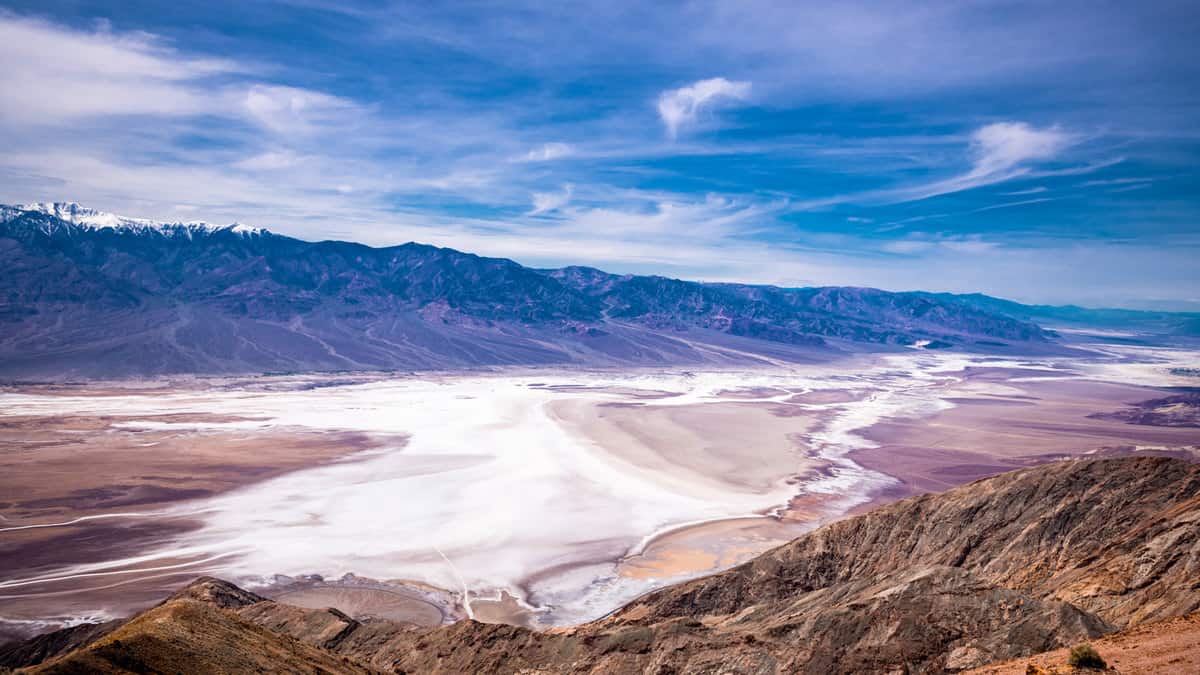
You have a clear view across the valley floor from here, showcasing the park's extreme elevation differences.
After checking out the top spots, see "27 Death Valley Pictures That Will Make You Want To Visit The Park" for more reasons to visit.
Navigating to Death Valley
Getting to Death Valley National Park is straightforward: the main routes are via Highway 190 or from Las Vegas through Pahrump and Death Valley Junction.
The park charges an entrance fee of $30 per vehicle, valid for seven days.
Prices can change, so it's wise to check the National Park Service's official website before your visit for the most current information.
If you are returning often or planning to visit other national parks within the year, consider the annual pass for $55, offering unlimited access to Death Valley.
Whether you're coming for a day or extending your stay to a week, every visit promises a discovery, so be sure to verify fees to plan your adventure accurately.
Stock up on water, slap some sunscreen, and satisfy your curiosity. Once you're here, take a beat to soak in the quiet, the sheer expanse and the enigmas enveloping this national marvel.
Got tales to tell from your visit? Drop a comment below. We're all ears to hear about your encounters with Death Valley's mystifying stones.
